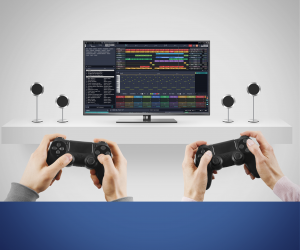
How To: 5-Hour Progressive House with Project 46
Project 46’s Thomas Shaw dishes the truth about delivering a Progressive House track lightning quick in FL Studio 12.
Tutorial: Thomas Shaw
Even though it’s one of the most widely used DAWs on the planet, some people still have a weird aversion to FL Studio. I get it, a little. I mean, it’s called Fruity Loops and it’s also got that reputation that everyone cracks it and makes their first beats on it. Nevertheless, when you dive in, it’s really good.
I’ve used every DAW and I’m just fastest on this one, which is why I’ve persevered. I use Logic to quantise some live instruments, but I bring all the audio back into FL Studio.
It’s also really efficient. The MIDI mapping is simple and with ASIO driver support FL has really low latency — I’m running my whole project with only 5ms of latency. Even though the developer, Image Line, is close to releasing a proper version for Mac, it’s originally designed to work on PC. I see this as a big plus, because you can build a faster machine for less money.
Where FL Studio really excels for me is in the sequencing — it’s best of breed.
I keep banging on about speed because it can be really important when you’re working full-time on music. For instance, the song we’re looking at here, The Truth, took us four hours and 50 minutes to put together. They’re not all like that: Memories took us three years to make, and Last Chance took a year and a half. Sometimes it works, and sometimes it doesn’t. This song worked. Which I needed to finish the song today, because the vocal was being cut again tomorrow, and I was getting on a plane the day after, which also happened to be the album deadline.
FRUITY LOOPS GROWS UP
Version 12 of FL Studio was a huge upgrade because of the new mixer. Prior to this release, you couldn’t do simple tasks like select multiple channels, or route all of those channels to a bus. It wasn’t necessarily because Image Line couldn’t program it, it’s just that FL routes things in a different manner.
In Ableton or Logic, if you have a track, it’s a dedicated track. You have one instrument in that track, and that’s it. If you want to load a new instrument, you go to the next track. But FL is all sequencer based; the whole thing works like a drum machine. You can put 10 different instruments in the same track if you want. As a result, it’s a little messier because your automation is for individual instruments and sounds, as opposed to actual tracks. In FL Studio 12, they’ve really tuned up the mixer; selecting is vastly improved and you can easily gang faders. The bussing is much better, grouping is a breeze, and you can send tracks anywhere with virtual patch cables or set it to sidechain via the dropdown menu.
It also looks a lot nicer now. The colours are less ‘robust’ and you can scale your GUI to fit any screen, including hi-res ones. Unfortunately, not all the plug-ins I use scale as well, so even though my Razer Blade laptop has a 3K screen, I still run it in HD.
![Thomas_Project-46-3-984x500_[Print]-pichi](https://www.audiotechnology.com/wp-content/uploads/2022/05/Thomas_Project-46-3-984x500_Print-pichi.jpg)































RESPONSES